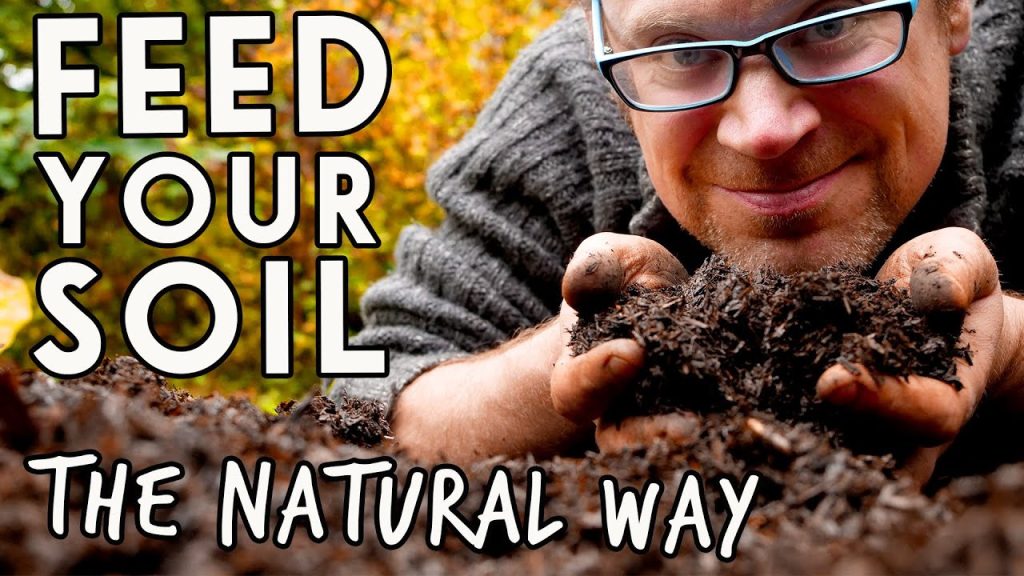The Influence of Soil Cover on Garden Preparation: Benefits and Methods for Beginners

Unlocking the Secrets of Soil Cover
When preparing your garden, the influence of soil cover is often overlooked, yet it holds the key to achieving a flourishing landscape. Proper soil cover not only enhances soil health but also offers numerous benefits that every gardener should be aware of. Understanding soil cover can transform your gardening experience, making it more fruitful and sustainable.
One of the most significant benefits of soil cover is its ability to prevent erosion. Erosion is a pervasive issue, especially in regions prone to heavy rainfall or wind. Without adequate cover, the topsoil can be washed away, leading to loss of nutrients and even creating unsightly gullies in your garden. Techniques such as planting grass or using lumber scraps can act as barriers, protecting your soil against these natural forces.
Moreover, soil cover plays a crucial role in enhancing moisture retention. By using materials like straw or shredded bark, gardeners can create a barrier that reduces evaporation. This is particularly vital in arid regions, where irregular rainfall makes water conservation a priority. Studies indicate that mulched soils retain moisture significantly better than bare soils, which can lead to healthier plants with less frequent watering—making it a pragmatic choice for lazy weekends or busy schedules.
Additionally, soil cover suppresses weeds, a common challenge for gardeners everywhere. A thick layer of mulch or ground cover plant can effectively block sunlight from reaching weed seeds, preventing them from germinating. For instance, layering newspaper or cardboard underneath mulch can enhance this effect, allowing your desired plants to thrive without competing for resources.
For beginners, grasping the methods of implementing soil cover can seem daunting. However, familiarizing oneself with effective techniques can make the journey easier and more productive. Key methods include:

- Using Mulch: Organic mulches, such as wood chips or straw, not only beautify the garden but also improve soil fertility as they break down.
- Planting Cover Crops: Crops like clover or buckwheat can improve soil structure and fertility while protecting the ground during off-seasons. They can even be tilled back into the soil to enrich it further.
- Employing Ground Covers: Low-growing plants, such as creeping thyme or clover, serve as a living blanket over the soil, offering benefits like moisture retention and attracting helpful pollinators.
Diving deeper into these benefits and methods can empower beginners to cultivate a thriving garden, setting the stage for successful growth in the seasons to come. Ultimately, understanding the stunning impact of soil cover can lead to healthier plants, reduced maintenance, and a more enjoyable gardening experience overall.
DISCOVER MORE: Click here for essential soil preparation tips
Embracing the Power of Soil Cover: A Guide for New Gardeners
The benefits of soil cover extend well beyond simple aesthetics; they play a pivotal role in the overall health and productivity of your garden. As a beginner gardener, understanding how to effectively apply soil cover techniques can significantly enhance your gardening experience. Let’s delve into some primary benefits that these methods offer, making them essential for anyone looking to cultivate a green space.
At its core, soil cover serves as a protective layer on the soil surface that nurtures life below. This rich foundation is essential for several reasons, the most notable being soil temperature regulation. In regions experiencing fluctuating climates, such as the Midwest, a layer of mulch can help moderate soil temperatures, keeping it cooler in the summer and warmer in the winter. This stability aids in ensuring that plant roots don’t experience extreme temperature shifts, which can impede growth.
Furthermore, incorporating soil cover is a highly effective way to improve microbial activity within the soil. Organic materials used as mulch decompose over time, enriching the soil with essential nutrients. This naturally promotes a thriving ecosystem where beneficial microorganisms flourish, breaking down organic matter and releasing vital nutrients required for plant health. This symbiotic relationship contributes to a truly living soil environment that can sustain long-term growth.
In addition to enriching the soil and maintaining temperature, soil cover significantly contributes to reducing compaction, a common concern in gardening. Tread on bare soil often leads to compaction, which impedes root growth and water infiltration. By using ground covers or mulch, gardeners can create a barrier that minimizes foot traffic on soil surface, promoting better aeration and healthier plant roots. This can be particularly beneficial in urban gardening scenarios where space might be limited, and plants are often subjected to compacted soil.
For those keen on environmental sustainability, soil cover also helps in promoting biodiversity within the garden. When you apply diverse cover crops, like vetch or rye, you can attract various beneficial insects, birds, and pollinators to your garden. According to studies, gardens with diverse plant life not only thrive better but are also less susceptible to pests and diseases. This encourages a natural balance, which is especially important for aspiring organic gardeners.
To harness these benefits effectively, beginners can adopt several straightforward methods:
- Layering Organic Mulch: Employ materials such as grass clippings, hay, or wood chips to create an organic mulch layer that will decompose over time, enriching the soil.
- Utilizing Green Manures: Planting cover crops like peas or clover during the off-season can enrich the soil once tilled back in, providing a natural fertilizer.
- Choosing Native Ground Covers: Native plants such as sedum or creeping phlox are well-suited to regional climates and offer effective soil coverage while enhancing local biodiversity.
By comprehending these benefits and integrating the methods of soil cover into your garden preparation routine, you are setting the stage for a bountiful and sustainable garden experience. This foundational knowledge not only fosters a rewarding gardening journey but also nurtures awareness about the importance of soil health for future generations.
The Influence of Soil Cover on Garden Preparation: Benefits and Methods for Beginners
Understanding the importance of soil cover can significantly enhance your gardening experience, especially for beginners. Soil cover—or mulch—plays a pivotal role in protecting the soil, retaining moisture, and suppressing weeds. By implementing soil cover, novice gardeners can create an environment that fosters healthier plant growth while minimizing maintenance efforts. Here are some key benefits:
| Category 1 | Category 2 |
|---|---|
| Soil Protection | Soil cover protects against erosion and nutrient loss, ensuring the soil remains fertile. |
| Moisture Retention | Mulch can significantly reduce water evaporation, leading to less frequent watering. |
| Weed Suppression | Using mulch minimizes the chances of weed growth, freeing up time for other gardening tasks. |
| Temperature Regulation | Soil cover helps maintain a stable soil temperature, fostering better plant development. |
For beginners, selecting the right type of soil cover is essential. Options include organic materials like straw, wood chips, and grass clippings, or inorganic options like gravel and landscape fabric. Each type offers distinct advantages, and understanding these can help you tailor your gardening approach. By incorporating soil cover methods, you can create a flourishing garden while minimizing your workload.
As your gardening journey unfolds, consider experimenting with different soil cover types and techniques to discover what best suits your unique gardening environment.
DIVE DEEPER: Click here to discover essential practices
Unlocking the Secrets of Soil Cover Techniques
As you embark on your gardening journey, it’s imperative to not only understand the benefits of soil cover but also the techniques that can facilitate its proper application. Implementing effective methods is key to achieving a thriving garden. Here, we explore additional practical methods that can further enhance your soil cover strategy, along with some recommendations tailored to different gardening scenarios.
Composting: The Backbone of Soil Nutrients
An excellent way to incorporate soil cover is through composting. By transforming kitchen scraps, yard waste, and other organic materials into nutrient-rich compost, you create a powerhouse of organic matter. When applied as a soil cover or mixed back into the soil, compost can improve drainage, increase moisture retention, and provide a slow-release source of nutrients. For instance, consider building a compost bin in your backyard. Over time, as the materials break down, you’ll have an abundant resource that provides numerous benefits for soil health.
Employing Landscape Fabric: A Practical Solution
For those looking for a more controlled approach, using landscape fabric can be an effective method of soil cover. This permeable material allows water and nutrients to pass through while suppressing weed growth—one of the most common challenges faced by new gardeners. By laying down landscape fabric before adding mulch or gravel, you can eliminate the competition from weeds while protecting your plants. Be mindful to choose high-quality fabric that will endure various weather conditions, ensuring longevity in your garden.
Implementing No-Till Gardening: Protecting Soil Integrity
No-till gardening is an increasingly popular method among environmentally conscious gardeners. By avoiding the traditional practice of tilling, you preserve the soil structure, retaining moisture and preventing the disruption of soil organisms essential for plant health. Instead, you can lay down a robust layer of organic matter as a soil cover, planting directly into it. This approach reduces soil erosion and compaction while boosting biodiversity. Consider using cardboard or newspaper as a weed barrier during your no-till process, allowing it to decompose over time while enriching the soil beneath.
Timing and Maintenance Considerations
When applying soil cover, timing is crucial. Ideally, cover crops should be planted in late summer or early fall, allowing them to grow during off-seasons. For mulching materials, apply them once soil temperatures have stabilized in the spring. Additionally, it’s important to monitor and renew your soil cover regularly. In the case of organic mulches, replenishing them every few months helps maintain their effectiveness, ensuring continued moisture retention and nutrient cycling.
The Benefits of On-Site Resources
For those on a budget or looking to reduce their environmental footprint, utilizing on-site resources can be beneficial. Grass clippings, fallen leaves, and small branches can be repurposed as a natural mulch. Creating a “chop and drop” approach—where you leave lawn clippings on the lawn or prune plants within the garden bed—can effectively enhance soil cover while enriching the soil. These simple techniques maintain the natural cycle of your garden ecosystem and support sustainability.
By exploring these methods and tailoring them to your specific gardening needs, you’re better equipped to harness the full potential of soil cover. The techniques discussed not only promote health and resilience in your garden but also pave the way for a deeper connection with nature. Being aware of the myriad options available enables you to make informed choices as you cultivate your green space.
DON’T MISS: Click here for tips on pest prevention
Conclusion: Embracing the Power of Soil Cover in Your Garden
As you venture into the world of gardening, understanding the influence of soil cover on garden preparation is invaluable. The techniques discussed—ranging from composting and landscape fabric use to no-till gardening—highlight the multifaceted benefits of incorporating soil cover into your gardening practices. Each method serves to strengthen soil health, enhance moisture retention, and suppress pesky weeds, ultimately leading to more robust and productive plant growth.
Moreover, the convenience of using on-site resources not only reduces costs but also promotes a sustainable gardening approach, allowing you to engage more deeply with the environment. By harnessing the natural cycles within your ecosystem, you’re not just cultivating plants; you’re cultivating a harmonious relationship with nature.
As you implement these strategies, remember that timing and regular maintenance play crucial roles in maximizing the advantages of soil cover. The journey of a gardener is one of continuous learning; adapting these techniques to fit your unique space will empower you to create a thriving garden that reflects your personal touch.
So, whether you are just starting out or looking to refine your existing approach, embracing the principles of soil cover will lead to long-term success. Explore these methods, discover what resonates with your gardening style, and experience the enriching rewards that come from a garden well-prepared and cared for. Your flourishing green space awaits!



